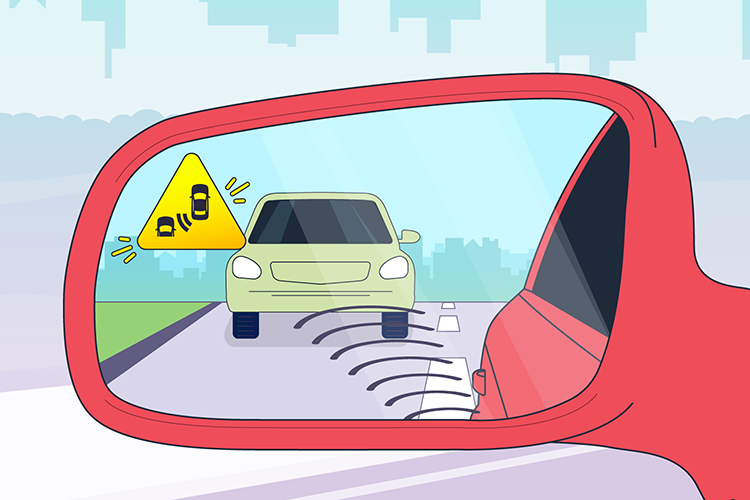How this technology works
Blind spot warning systems detect vehicles in a drivers blind spot – areas to the side and rear of the vehicle outside the drivers view – and notifies the driver if a vehicle is detected. Sensors (camera, ultrasonic, or radar) monitor for vehicles in a vehicle's blind spots and alert the driver with lights mounted in either the side-view or rear-view mirrors, or the door. If you switch on a turn signal to make a lane change, and a vehicle is present in the blind spot, the system may warn you with red or yellow flashing icons and/or audio alerts, or by vibrating the steering wheel or the drivers seat.
Description
A vehicle’s rearview mirror shows an approaching car on the driver’s side. An alert flashes in the corner of the mirror.
Operation
- An image may appear on the side mirror informing you of something in your blind spot even if your turn signal is not turned on. However, the system will only send a warning e.g. beeping noise, if you switch on the turn signal.
- The system can be switched on and off.
Other names for this technology
- Active blind spot assist
- Blind spot assist
- Blind spot detection
- Blind spot information system
- Blind spot intervention
- Blind spot monitoring
- Lane Change Alert with Side Blind Zone Alert
- Lane change assist
- Passive blind spot monitoring
- Side assist
- Side blind-zone alert
- Smart Blind Spot Detection
- Rear vehicle monitoring
Things for drivers to keep in mind
- The system's monitoring range varies by make
- The system may not detect motorcycles or very fast moving vehicles
- These systems are designed to help you drive. They don't replace your attention and judgement
- Don't rely solely on the system. Always be vigilant when driving
- Drivers are encouraged to read the owner's manual to become familiar with this system, including its capabilities and limitations
